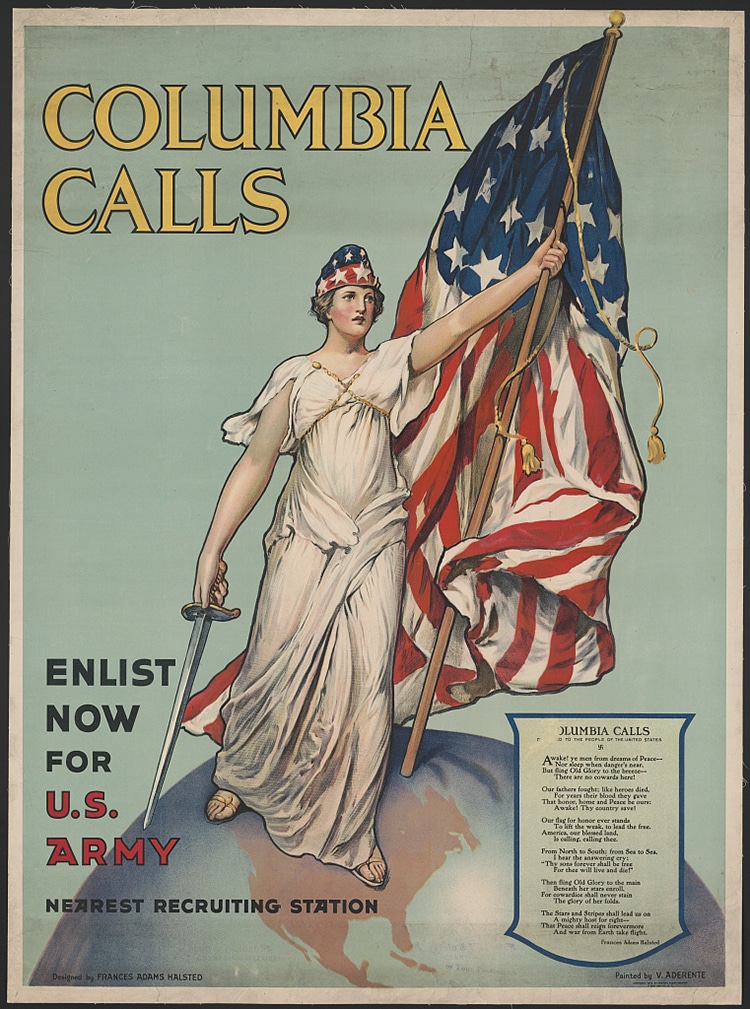While dramatic music sounds, a torch-bearing woman dressed like a Roman goddess appears on screen against heavenly clouds.
Bold text behind her announces the name Columbia.
This familiar tableau has appeared millions of times in theaters and living rooms around the world.

“Columbia Calls—Enlist Now for U.S. Army,” an enlistment poster by Vincent Aderente, 1916. (Photo:Wikimedia Commons, Public domain)
This iconic logo of the storiedColumbia Picturesstudio helped define the 20th-century American film industry.
But do you know its origins?
The recognizable modern logoadopted in the 1990soriginated as a stunning reference image by New Orleans-based photographerKathy Anderson.
The idea of Columbia is an old one steeped in American history.
She is related to, yet usually distinct from, Lady Liberty.
Columbia CallsEnlist Now for U.S. Army, an enlistment poster by Vincent Aderente, 1916.
Her classical clothing was adorned with American flag drapery for a mid-century update.
Her torch is depicted as casting bright rays of light.
Deas' oil masterpieces have adorned the cover ofTIMEmagazine, U.S. postage stamps, and bestselling books.
Like many painters, he often used reference photos to craft the perfect image.
For the Columbia Pictures' logo, Deas turned to his friend, photographer Kathy Anderson.
Anderson worked at the New Orleans paperThe Times-Picayune, where she employed her talents in portrait and documentary photography.
Using a softbox and strobe lights, Anderson created the gentle sunrise light the painter envisioned.
She also enlisted a modelher coworkerJenny Joseph, who had never modeled before.
In front of a gray background, Joseph held a candle-shaped lamp aloft while draped in a Grecian ensemble.
Anderson first shot instant Polaroids as proofs before beginning the roll of medium format color Kodak film.
With her Hasselblad, Anderson captured a series of stunning images in different poses.
But after chatting for a minute, she confided that she was pregnant.
After congratulating her, we resumed shooting, but I was worried about her standing on the box.
Anderson later won a Pulitzer Prize as part ofThe Times-Picayuneteam for their coverage of Hurricane Katrina.
Deas has continued to paint iconic Americans, including a portrait of Benjamin Franklin for aTIMEcover.
An older example of Columbia Picture’s logo, used 1936-76.